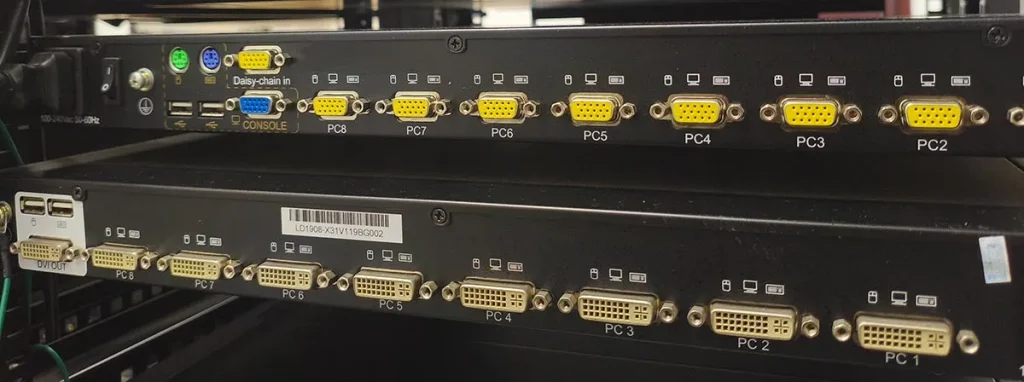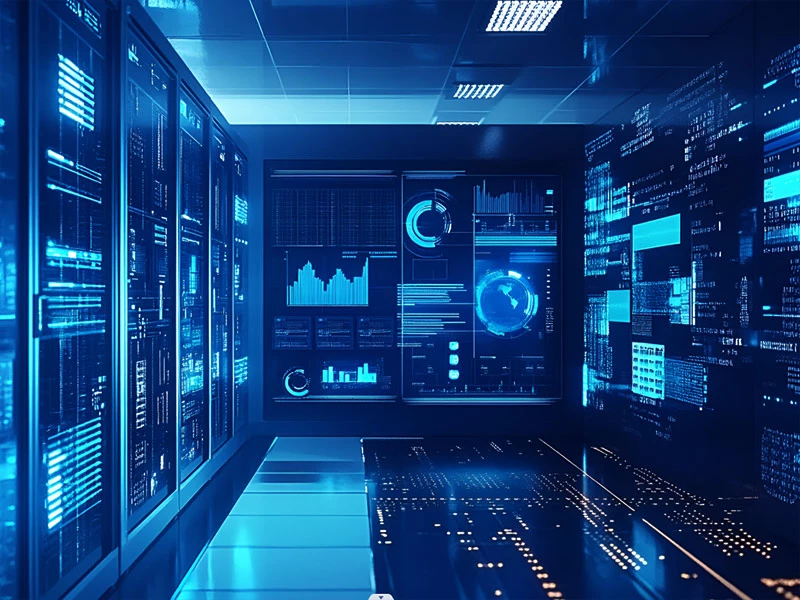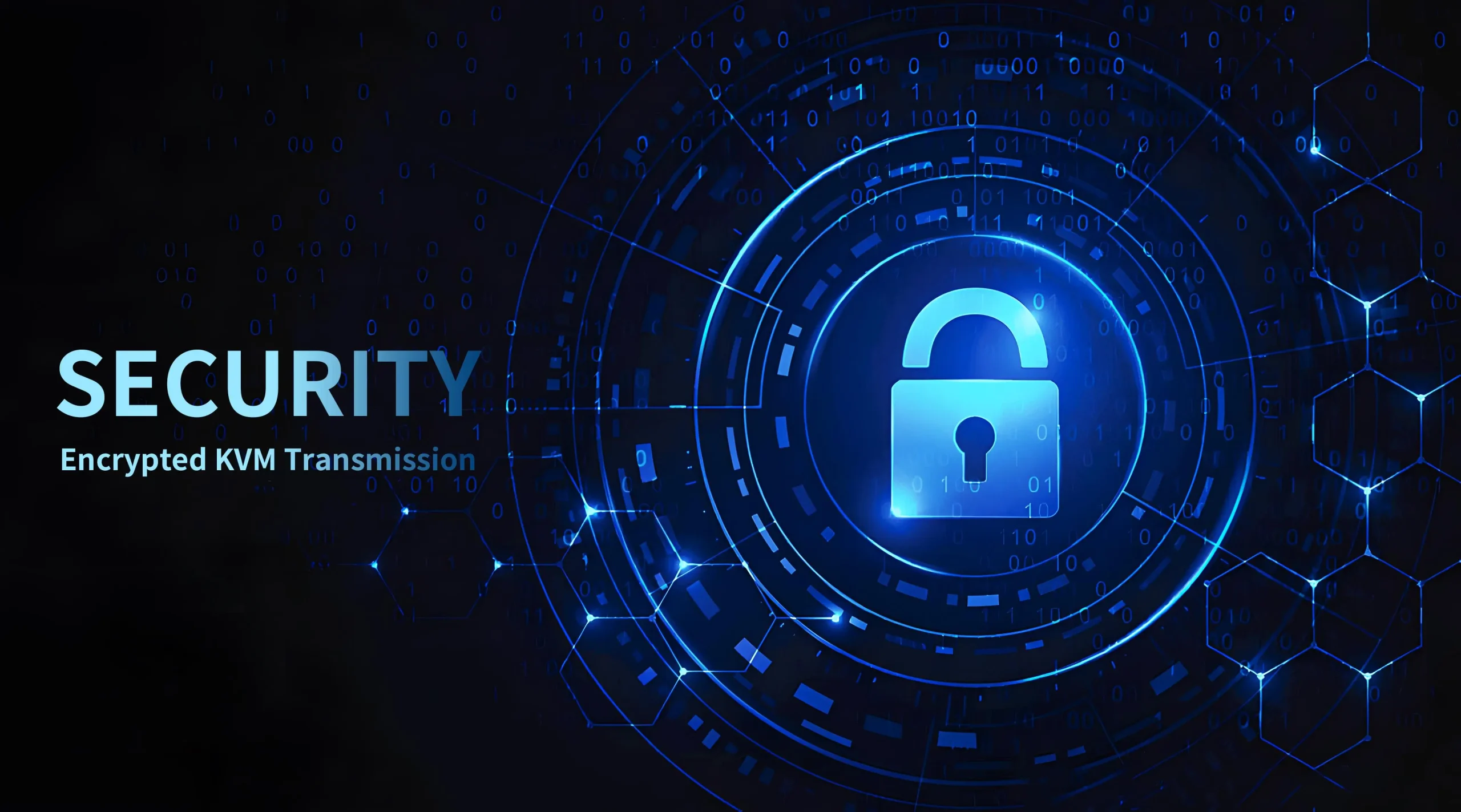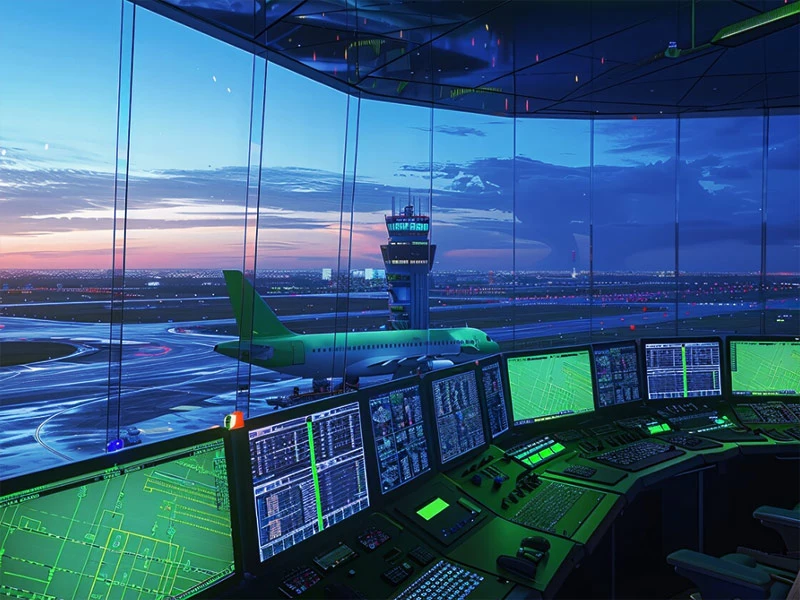As the demand for large data management increases, Microsoft, Google, and Amazon Web Services (AWS) are competing fiercely to build Mega Data Centers where many servers are needed to manage. However, how to manage these massive servers? In fact, KVM technology has been a vital connection between operators and servers. To explore further, follow this article.
What challenges in data centers?
We all know that data centers are specialized facilities where compute, storage, and network devices are centrally deployed, providing infrastructure support for digital service. It ensures the continuous and stable operation of IT equipment through professional environment, power guarantee and refrigeration system. However, there are still some challenges in data centers.
- Devices are intensive. In the data centers, servers and other network devices are too many to manage. The physical space is limited. How to manage these devices efficiently is a core issue.
- The operation and maintenance are complicated. The operators need to manage multiple servers simultaneously cross multiple platforms and locations.
- The demand for data security is high. Sensitive data is subject to strict access controls. Unauthorized operation is not allowed.
- High availability. 24×7 hours of uninterrupted operation and maintenance are required to respond quickly to faults.
The core functions of KVM switches in data centers
Multi-devices centralized management
A KVM switch allows users to control more than 2 computers easily through a single keyboard, mouse, and monitor. In data centers, multiple KVM switches can support the management of hundreds and thousands of servers. A switch’s 1U design can optimize the layout of the servers. Additionally, the switches and servers can be placed in cabinets to save more space.

Cross-platform compatibility
KVM switches are compatible with different brands of servers (like Dell, HP, IBM) and operating systems such as Windows, Linux, Max, etc. Hence, this function allows a smooth connection and operation.
High-level security transmission
With KVM switches, the transmitted data can be encrypted. What’s more, to enhance security, the switches also support hierarchical permission management. For example, an operator can only view the screen. But another operator can control the devices freely.
The impact of KVM switches on data centers
1. Optimize space utilization and reduce costs
A single set of keyboard, mouse, and monitor can control multiple servers, reducing the number of peripheral devices and improving the utilization rate of space. A reduction in the number of devices can also lead to a decrease in power consumption.
2. Improve O&M efficiency
Users can switch different servers swiftly, shortening the troubleshooting time. Additionally, BIOS-level operation is supported, which is convenient for users to set up systems and update firmware.
3. Centralize the management
One KVM switch with multiple ports (4/8/16/32 ports) can support multiple servers. KVM switches can integrate cross-platform devices (Windows, Linux, and Unix) into a unified interface, reducing the number of management consoles.

4. Enhance security
KVM switches can physically isolate the terminal console from the servers to reduce the risk. In addition, the operators can stay in a safe room to control servers, no need to enter data centers many times for troubleshooting.
Conclusion
Data centers are essential places for many enterprises to set up a high-efficiency management system. In this system, KVM switches can save costs, optimize space, improve efficiency, and provide unparalleled convenience. If you want to build a data center to manage multiple servers, KVM switches are your important assistants. Certainly, a mega data center may need a more complicated IP KVM system to achieve convenient and efficient management.



